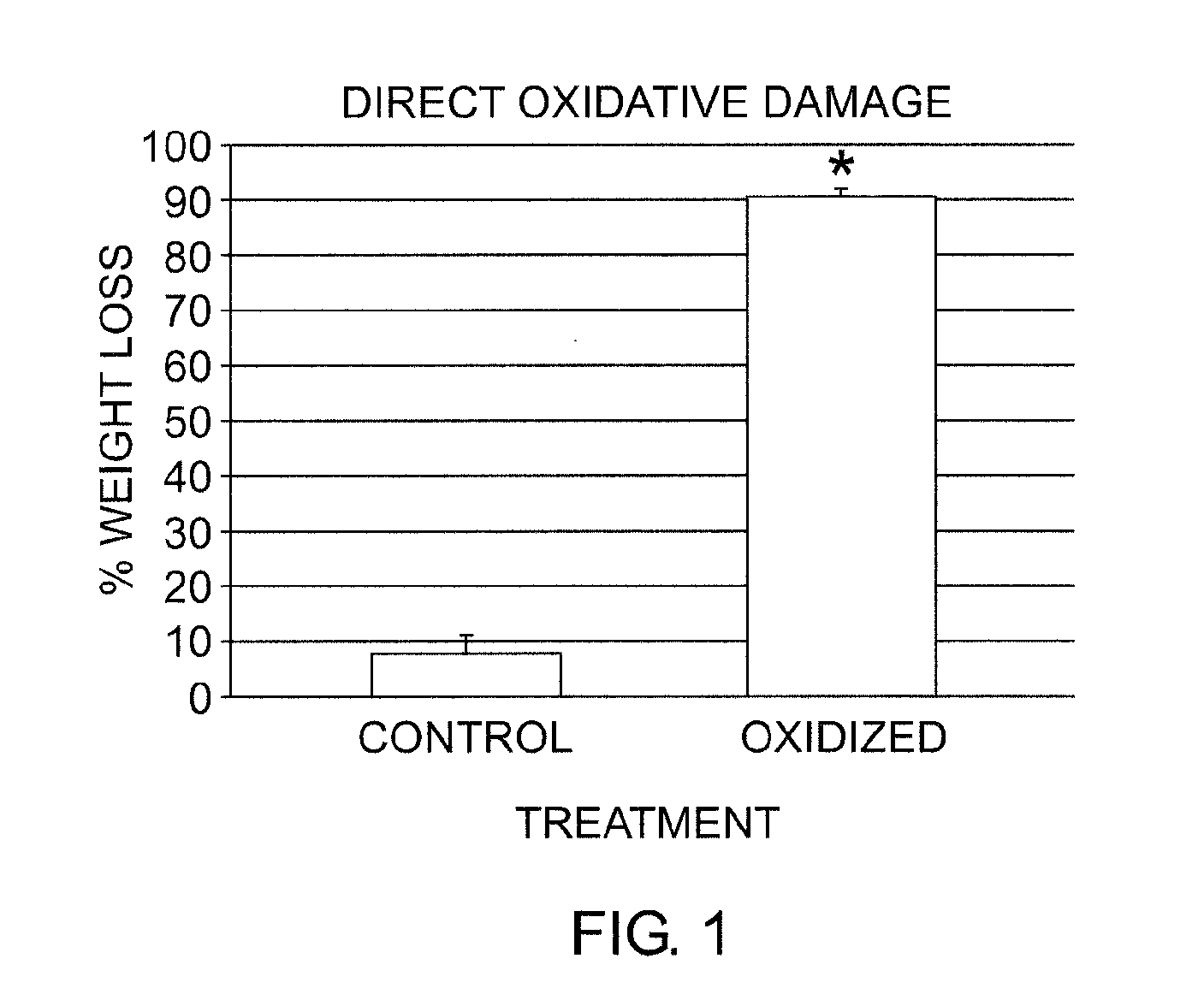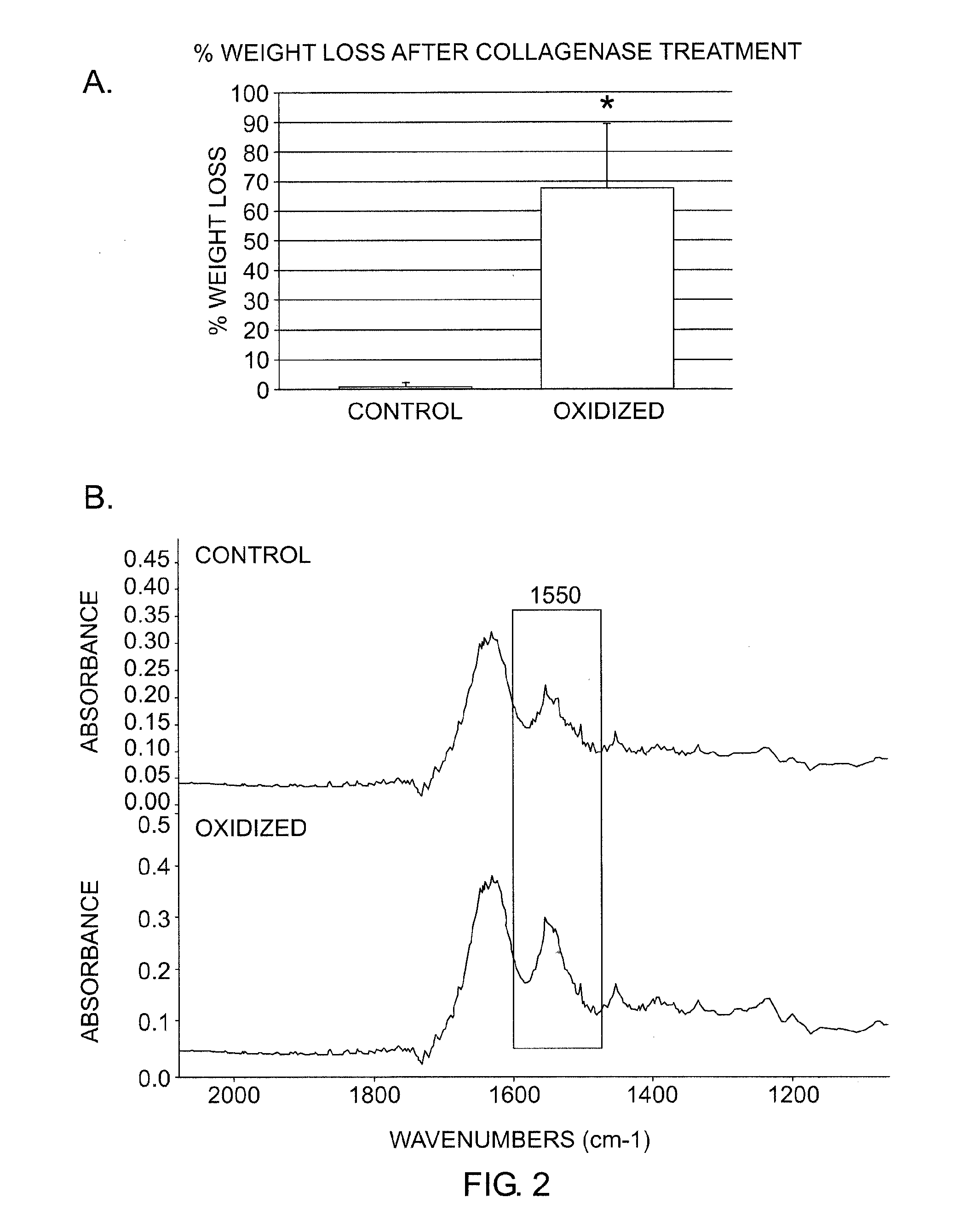Oxidation resistant bioprosthetic tissues and preparation thereof
a bioprosthetic tissue and oxidation resistance technology, applied in the field of oxidation resistance bioprosthetic tissues and preparation thereof, can solve the problems of oxidative stress contributing to the failure of bioprosthetic heart valve material failure, general failure, and use of anti-oxidants, and achieve the effect of preventing oxidative degeneration of bioprosthetic tissu
- Summary
- Abstract
- Description
- Claims
- Application Information
AI Technical Summary
Benefits of technology
Problems solved by technology
Method used
Image
Examples
example 1
Oxidative Stress in Bioprosthetic Heart Valve Deterioration
[0089]In vitro model system studies were carried out using a modification of a well established oxidative stress system involving incubating synthetic polymers in hydrogen peroxide solutions (Stachelek S J, et al. J Biomed Mater Res A 2006; 78:653-61). This experimental system was originally developed and validated for investigating polyurethane oxidative degradation, and was adapted for studies of oxidative stress in bioprosthetic heart valve leaflet samples.
[0090]In brief, bovine pericardium was fixed in 0.6% glutaraldehyde using established conditions for preparing this material for use in bioprosthetic heart valves. These glutaraldehyde cross-linked bovine pericardium samples (typically 1 cm×1 cm) were incubated in 20% H2O2 for 14 days at 37° C. Solutions were changed every three days. At the end of the incubation period, the samples were washed with water or PBS, and stored at 4° C. until later analysis. Samples designa...
example 2
Prevention of Oxidative Stress-Induced Damage in Bioprosthetic Heart Valve Leaflets
[0093]In these studies, it was investigated whether the use of an anti-oxidant could prevent the extensive breakdown of bioprosthetic leaflets due to ROS. A local therapy strategy was investigated involving the covalent attachment of an antioxidant compound to bioprosthetic leaflets that were already crosslinked with glutaraldehyde.
[0094]A chemical immobilization strategy was adopted to improve the oxidative stability of a bioprosthetic tissue via covalent attachment of antioxidant functions based on hindered phenolic residues covalently immobilized on collagenous biomaterials. The modification employed direct coupling of the collagen's carboxylic groups (from residues of aspartic and glutamic acids) with the amine groups of a hindered phenolic antioxidant using water-soluble 1-(3-dimethylaminopropyl)-3-ethylcarbodiimide hydrochloride (EDC). Among many possibilities, 4-hydroxy-3,5-di-tert-butylphenylp...
PUM
 Login to View More
Login to View More Abstract
Description
Claims
Application Information
 Login to View More
Login to View More - R&D
- Intellectual Property
- Life Sciences
- Materials
- Tech Scout
- Unparalleled Data Quality
- Higher Quality Content
- 60% Fewer Hallucinations
Browse by: Latest US Patents, China's latest patents, Technical Efficacy Thesaurus, Application Domain, Technology Topic, Popular Technical Reports.
© 2025 PatSnap. All rights reserved.Legal|Privacy policy|Modern Slavery Act Transparency Statement|Sitemap|About US| Contact US: help@patsnap.com



